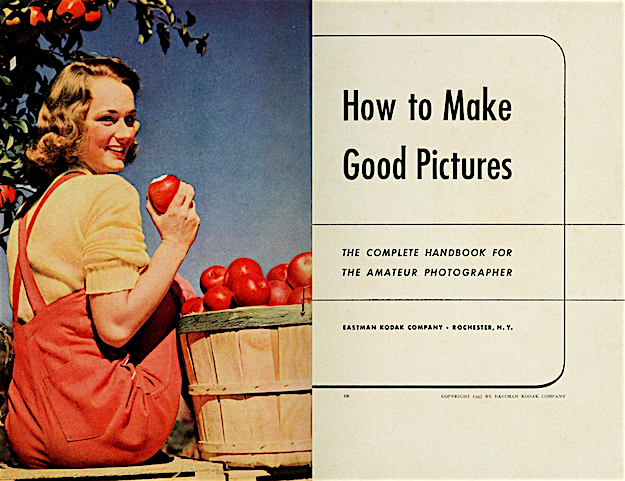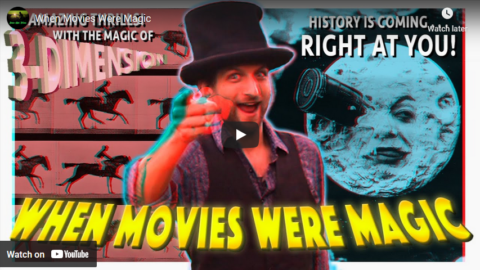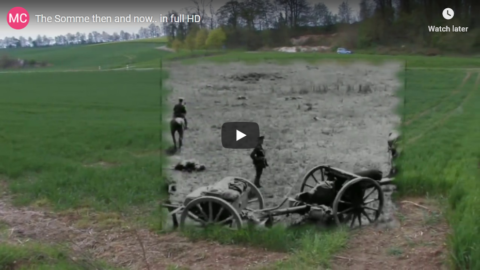Yorkshire Photo Walks
Published Jun 9, 2024In this video Tom outlines a five-step process for turning your landscape photos from flat, boring shots to professional looking images.
(more…)
December 8, 2024
Why your landscape photos are boring 

February 16, 2024
July 18, 2023
Life lessons from Thomas Sowell’s memoir
Rob Henderson took a lot away from his recent reading of Thomas Sowell’s A Personal Odyssey, including some fascinating lessons from Sowell’s time in the US Marine Corps:
Trust people who value being honest more than being nice.
As the Korean War intensified, Sowell was drafted into the Marine Corps. He notes that color did not matter, as all new recruits were treated with equal disdain. Sowell describes his life in the Marine barracks in Pensacola. There were two non-commissioned officers permanently stationed to oversee the young marines. One was Sergeant Gordon, “a genial, wisecracking guy who took a somewhat relaxed view of life”. The other was Sergeant Pachuki, “a disciplinarian who spoke in a cutting and ominous way” and was always “impeccably dressed”.
Sowell and his peers preferred Sergeant Gordon, as he was more easygoing. Sowell had to go into town to pick up a package. Sowell asked his Chief Petty Officer if he could leave the base to retrieve his package. Sowell received permission.
Later, while Sowell was not on base, he was marked as absent and was accused of being AWOL (absent without leave), a serious offense. Sowell knew Sergeant Gordon, the nice one, had overheard him asking for permission to leave the base. Gordon denied having heard anything, and told Sowell, “You’re just going to have to take your punishment like a man”. Gordon fretted that if he crossed the higher-ups, he would be reassigned to fight in Korea.
But unasked, Sergeant Pachuki came forward and spoke with the colonel, explaining the situation. As a result, Sowell was exonerated and returned back to his duties.
Referring to Gordon, the “nice” sergeant who betrayed him, Sowell writes, “People who are everybody’s friend usually means they are nobody’s friend”.
A “free good” is a costless good that is not scarce, and is available without limit.
Sowell would regularly needle Sergeant Grover, another member who outranked him.
Here’s the excerpt:
Some were surprised that I dared to give Sergeant Grover a hard time, on this and other occasions, especially since he was a nasty character to deal with. Unfortunately for him, I knew that he was going to give me as hard a time as he could, regardless of what I did. That meant it didn’t really cost me anything to give him as hard a time as I could. Though I didn’t realize it at the time, I was already thinking like an economist. Giving Sergeant Grover a hard time was, in effect, a free good and at a zero price my demand for it was considerable.
Sowell learned he could receive something he enjoyed (pleasure at provoking Grover) in exchange for nothing.
Much of what you see has been carefully curated with an agenda in mind.
One of Sowell’s assignments in the Marine Corps was as a Duty Photographer on base. One day after submitting some of his photos, Sowell had the following exchange with the public information office sergeant:
“They are good pictures, he said. “But they do not convey the image that the public information office wants conveyed.”
“What’s wrong with them?” I asked.
“Well, take that picture of the reservists walking across the little wooden bridge carrying their duffle bags.”
“Yeah. What’s wrong with it?”
“The men in that picture are perspiring. You can see the damp spots on their uniforms.”
“Well, if you carry a duffle bag on a 90-degree day, you are going to sweat.”
“Marines do not sweat in public information photographs.”
“Okay, what was wrong with the picture of the reservists picking up shell casings after they had finished firing? That was one of my favorites.”
“Marines do not perform menial chores like that, in our public relations image.”
“But all these photos showed a very true picture of the reservists’ summer here.”
“We’re not here to tell the truth, Sowell,” he said impatiently. “We are here to perpetuate the big lie. Now, the sooner you understand that, the better it will be for all of us.”
When I visited the Air Force recruiter in high school, I saw the brochures with images of well-groomed airmen in their dress blues graduating from basic training. I had no knowledge that much of that training would involve mind-numbing minutia. I suppose this is true for other career fields too. You see radiant coverage of academic research in legacy media outlets, or fun twitter threads outlining interesting research findings. You see the brand new hardcover book with all the glowing blurbs and reviews. You don’t see all the drudgery of research or writing behind the scenes.
Sometimes, it doesn’t pay to have too big a reputation.
Sowell and his fellow marines would sometimes have impromptu boxing matches around the barracks on base. One day Sowell was up against another guy and threw a sloppy right hand. The guy stumbled back, tripped, and fell to the ground. Although Sowell had swung and missed, witnesses thought he had knocked the other guy out.
Later, Sowell went up against another guy named Douglas. Douglas relentlessly came at Sowell and gave him a serious beating. Douglas told Sowell afterwards that the reason he was so aggressive was that he feared Sowell’s “one punch” could turn the fight around at any time. “Sometimes,” Sowell writes, “it doesn’t pay to have too big a reputation.”
May 30, 2023
QotD: The technical flaws of modern cameras
The camera, it is said, does not lie, but when it comes to me it not only lies but is a pathological liar, incapable of telling the truth. Who is that creature it takes when pointed at me? Certainly not I: Every camera in the world, it seems, has been programmed to make me balder, whiter-haired, more wrinkled than I am. Who has done this, or why, I cannot say, but the evidence is plain for me, if not for anyone else, to see.
Theodore Dalrymple, “The Grand Illusion”, Taki’s Magazine, 2017-08-19.
May 22, 2023
What Happened Behind a Photographer’s Lens on D-Day
World War Two
Published 21 May 2023Robert Capa has gone down in history as one the most groundbreaking war correspondents in all of journalism. His account of what happened on D-Day was something we wanted to share with all of you.
(more…)
February 2, 2023
QotD: “Selfies”
I do not take selfies, but (if I am to tell the truth) it is not because I am appalled at the vacuity doing so seems to require, or at least to call forth: Sheep in a field are more like Rodin’s Thinker than are people who hold their phones on those ridiculous sticks before their faces. No, the problem is that, where the camera and I are concerned, it is not that it never lies, but that it never tells the truth.
I am always appalled by its results. I do not look like that when I glance in the mirror: I look far younger, less bald, wrinkled, ugly in short. I conclude, of course, that I lack that mysterious quality that only some lucky people have: I am not photogenic. If the camera never lied, if it showed me as I truly am, I would come out much better in photos.
I think it was the French-Romanian writer Emil Cioran who said that if a man knew that someone would one day write a biography of him, he would cease to live; in other words, it would paralyze him. In like fashion, if I thought that people would photograph me, I would stay indoors — the millions of spy cameras everywhere don’t count, no one looks at what they have recorded until there has been a murder or a terrorist attack (and then everyone is mostly unrecognizable).
I conclude, therefore, that most people who take selfies are at least minimally satisfied with their appearance, however they may appear to others. But in fact it hardly requires reflection on the selfie as a social, or antisocial, phenomenon to know that very large numbers of people have no idea what they look like to others. Or perhaps it is simply that they don’t care.
Theodore Dalrymple, “Suit Yourselfie”, Taki’s Magazine, 2017-09-16.
December 7, 2021
The Oberg Color Film Footage of Pearl Harbor – December 7, 1941
midway512
Published 7 Dec 2018This short documentary tells the story of Harold & Eda Oberg, and the film footage they recorded of the Pearl Harbor attack on December 7, 1941. The couple captured shots during and after the attack on Hickam Army Airfield.
November 16, 2021
Bettie Page: The Queen of Pinup
Biographics
Published 4 Mar 2019Visit our companion website for more: http://biographics.org
Credits:
Host – Simon Whistler
Author – Shannon Quinn
Producer – Jennifer Da Silva
Executive Producer – Shell HarrisBusiness inquiries to biographics.email@gmail.com
Source/Further reading:
https://www.youtube.com/watch?v=MJhop…
https://www.pbs.org/video/history-det…
https://nces.ed.gov/pubs93/93442.pdf
http://news.bbc.co.uk/2/hi/americas/7…
https://www.biography.com/news/bettie…
https://www.celebritynetworth.com/ric…
https://www.forbes.com/sites/zackomal…Secondary Sources/Photos/Videos:
(Hey guys- You technically can’t see any of her private parts in these videos, so it’s not really porn, but I still would not call this safe for work. Your wives, co-workers, or people on public transportation may give you really dirty looks if they see these over your shoulder. You have been warned.)
https://en.wikipedia.org/wiki/Bettie_…Dancing video
https://www.youtube.com/watch?v=_Pndr…
The “Striporama” scenes with Bettie Page
https://youtu.be/ZDypKx8c1TM
August 1, 2021
Gresham’s Law, as applied to photography
In economics, Gresham’s Law states that “bad money drives out good”, that may need to be reformulated as it applies to modern standards of photography in a formulation something like: “bad photos drive out good photos“:
“Art is like a joke, either you get it or you don’t.” So it was explained to me in the late 1970s by photographer Randy Eriksen, whose cheeky observation about the importance of context to one’s appreciation of either comedy or art could have been a parenthetical second subtitle for author and educator Kim Beil’s Good Pictures: A History of Popular Photography (Stanford University Press, 2020).
Beil’s episodic and highly readable book identifies 50 photographic trends — illustrated by hundreds of vintage and contemporary photographs — that have guided the aesthetics of photography since 1851, when a group of American daguerreotypes made a splash at the Crystal Palace Exhibition in London. Back in 1851, context mostly equaled 1851, as the latest photo technology of the day played a major role in how Victorians decided that one picture was good and another was not.
[…]
Beil’s own context began in Albany, New York, where she grew up. “My mom was into photography,” Beil tells me over the phone. “She was the one who took the pictures in my family. When my parents got me my first camera, a Nikon FE, they made me attend a class offered by the camera store. I remember it was held in this dark ballroom at an Albany hotel. It was me and a bunch of middle-aged men. That’s where I learned about 35mm cameras, f-stops, and shutter speeds.”
“How To Make Good Pictures” (Rochester, NY: Eastman Kodak Co., 1943).
Source: Collection of the Prelinger Library, via Collectors Weekly.Beil also learned from various “How to Make Good Pictures” manuals published by Kodak, which also hailed from upstate New York. “I’m pretty sure I internalized the advice I read in ‘How to Make Good Pictures’,” Beil says of her early aesthetic indoctrination, “things like avoiding centering your subject in the frame, the rule of thirds, shooting during ‘golden hour’, all that conventional wisdom.”
[…]
“Intention is central to the way I think about art, and maybe even how we define it,” Beil agrees. “Take lens flare: I think the power of lens flare comes from its initial unintentional use by people who were just taking casual pictures without any premeditation, without much intention.” In these sorts of photographs, Beil says, lens flare was an amateur mistake that conferred “a kind of authenticity to an image.” That’s why advertisers find lens flare so appealing. “Because we still associate it with authenticity,” Beil says, “it makes an advertising photo seem more real, maybe even spontaneous.”
Today, lens flare is so widely used, so intentional, that billions of smartphone cameras offer multiple variations of this former failing in the form of filters, which can be activated with a click or a swipe. “Everything can be achieved and there are no more accidents,” Beil says of photography in the 2020s, “so photographers look to things that happened before to reinsert some kind of authenticity into their pictures.” Thanks to technology, photographers can now pretend to take pictures as if they lacked the tools to make their pictures, well, good.
The problem, of course, is that technology is intrusive, inserting itself into aesthetics and even cultural paradigms without being invited to do so. “We have a situation today,” Beil says, “in which our smartphone cameras are producing pictures according to the criteria of software designers, who have made a lot of egregious assumptions about the tonality of skin color.” According the Beil, because the sample sets used by software designers have historically included more pictures of light skin tones than dark skin tones, the colors captured by our smartphone cameras do a better job of reproducing the lighter skin tones. “People with darker skin aren’t represented in the way that they want to be,” she says, “or even in the way that’s accurate. Google has promised that the Pixel 6 camera coming out in October 2021 is going to deal with that problem,” she adds, but Beil doesn’t sound like she’s expecting much more than an incremental improvement.
December 18, 2020
When Movies Were Magic (3D glasses recommended)
Atun-Shei Films
Published 8 Sep 2020A brief history of early motion picture technology and artistry, from the magic lantern to Georges Méliès. Presented in glorious 3-D!!!
To fully enjoy this video, you will need a pair of red/blue anaglyph 3-D glasses. They can be acquired cheaply at a number of online vendors, and you can even make them at home by coloring sheets of clear plastic with permanent markers: https://www.wikihow.com/Make-Your-Own…
Support Atun-Shei Films on Patreon ► https://www.patreon.com/atunsheifilms
Leave a Tip via Paypal ► https://www.paypal.me/atunsheifilms (All donations made here will go toward the production of The Sudbury Devil, our historical feature film)
Buy Merch ► https://www.teespring.com/stores/atun…
#FilmHistory #MagicLantern #3D
Reddit ► https://www.reddit.com/r/atunsheifilms
Twitter ► https://twitter.com/atun_shei~REFERENCES~
[1] William Godwin. Lives of the Necromancers (1834). Project Gutenberg https://www.gutenberg.org/cache/epub/…
[2] Paul Clee. Before Hollywood: From Shadow Play to the Silver Screen (2005). Houghton Mifflin, Page 12-21
[3] Chris Bennett. “The Psychedelic Phantasmagoria Shows of the 18th Century” (2018). Cannabis Culture https://www.cannabisculture.com/conte…
[4] Clee, Page 39-47
[5] Clee, Page 84-85
[6] “Dissolving View Magic Lantern Slides.” Magic Lantern World https://magiclanternist.com/2016/09/2…
[7] “A Color Photograph Pioneer Comes to Light” (2018). The European Synchrotron https://www.esrf.eu/home/news/general…
[8] Clee, Page 83
[9] Clee, Page 85-95
[10] “Freeze Frame: Eadweard Muybridge’s Photography of Motion” (2000). National Museum of American History https://americanhistory.si.edu/muybri…
[11] “Sallie Garner at a Gallop.” IMDB https://www.imdb.com/title/tt2221420/…
[12] Laurent Mannoni. “Etienne-Jules Marey: French Physiologist and Chronophotographer.” Who’s Who of Victorian Cinema https://www.victorian-cinema.net/marey
[13] Clee, Page 107-109
[14] Harald Sack. “The Kinetoscope and Edison’s Wrong Way to Invent the Cinema” (2020). SciHi Blog http://scihi.org/kinetoscope-edison/
[15] Clee, Page 127
[16] Clee, Page 139-141
[17] James Travers. “Georges Méliés Biography: Life and Films” (2017). FrenchFilms.org http://www.frenchfilms.org/biography/…
[18] Clee, Page 158-159
July 1, 2020
The Somme then and now … in full HD
MC C
Published 1 Aug 2016100 years ago Malins and McDowell exposed their film to the light capturing a moment in time.
It’s very difficult to understand and watch the original film as they were very limited by technology and the danger. Malins risked his life on several occasions making this film, being right on the front line with a huge box camera sticking out above the trench. After watching the film many times, over many years, I wanted to find these locations and stand in their foot prints and re-film.
Some locations were easy to find, some took much research and some I haven’t yet been able to locate, but all the ones in this documentary are within yards to feet of where they filmed originally, none are guesses or just possibilities. I hope you enjoy watching and it helps you to understand please leave comments this is worth more to me than earning money I ask for nothing but love remarks.
May 13, 2020
Okay, I’ll be careful not to call this “deceptive advertising” in future
At View from the Porch, Tam explains why digital camera terminology sometimes seems to be deliberately deceptive:
The disconnect comes when you run into the “luxury” or “enthusiast” end of the compact camera market, where the physical size of the 1″ sensor in cameras like Sony’s RX100 line or the Canon PowerShot G7/G9 is touted as a selling point.
Because the sensor itself is not physically an inch in any dimension. For that matter, a tiny 1/2.5″ sensor isn’t two fifths of an inch in any dimension either.
Small CCD/CMOS video sensors are labeled based on the size of video tube they replace. These tubes had a rectilinear imaging surface inside the cylindrical glass vacuum tube. Inside a 1″ tube would be an imaging surface measuring 16mm diagonally, or a little less. When solid state sensors started replacing tubes forty years ago, they were labeled according to the tube they’d replace.
So to this day, a sensor 16mm (or a bit less) diagonally is still called a 1″ sensor.
For that matter, “35mm” film is only 35mm if you measure from edge-to-edge, sprocket holes and all. “Full Frame/35mm” sensors are only about 29mm diagonally; there aren’t any digital sprocket holes.
Just like we still “dial” and “hang up” our cell phones, even though phones with dials and handsets that you hang on the wall are a vanishing memory, digital imaging technology is still named after the analog technologies it supplanted.
November 10, 2019
QotD: Dunning-Kruger Club
So, someone in a Facebook discussion brought up the usual “wOrKs fOr mE” nonsense to rationalize his love for an objectively awful pistol and when called on it, used every gun forum bubba trope you can think of to double down.
A friend mentioned that it was ignorant bro stuff like this that was causing him to seek out other hobbies, to which I ruefully commented that every hobby has its equivalent; guns and shooting aren’t unique.
And then someone else dropped the bomb:
“[Name Redacted], if you don’t recognize this behavior in other hobbies, it’s because you’re the one doing it.”
Ouch.
But the First Rule of Dunning-Kruger Club is “You don’t know that you’re in Dunning-Kruger Club.”
Tamara “Tam Slick” Keel, “The First Rule of Dunning-Kruger Club…”, View from the porch, 2019-09-30.
July 2, 2019
Antifa strikes back against the White Patriarchy … by assaulting a gay, visible minority journalist
Andy Ngo suffered potentially serious injuries in an assault by Antifa “activists” during a Portland demonstration:
Andy Ngo, a photojournalist and editor at Quillette, landed in the emergency room after a mob of antifa activists attacked him on the streets of Portland during a Saturday afternoon demonstration.
The assailants wore black clothing and masks, and were engaged in a counter-protest against several right-wing groups, including the Proud Boys. Ngo is a well-known chronicler of antifa activity, and has criticized their illiberal tactics on Fox News. He attended the protest in this capacity — as a journalist, covering a notable public event.
According to Ngo, his attacker stole his camera equipment. But video footage recorded by another journalist, The Oregonian‘s Jim Ryan, clearly shows an antifa activist punching Ngo in the face. Others throw milkshakes at him:
First skirmish I’ve seen. Didn’t see how this started, but @MrAndyNgo got roughed up. pic.twitter.com/hDkfQchRhG
— Jim Ryan (@Jimryan015) June 29, 2019
Quillette posted their reaction to the attack:
All revolutionary movements seek to sanctify their lawless behaviour as a spontaneous eruption of righteous fury. In some cases, such as the Euromaidan movement in Ukraine, this conceit is justified. But usually their violence is a pre-meditated tactic to intimidate adversaries. Or as Bolshevik theorist Nikolai Bukharin put it, “In revolution, he will be victorious who cracks the other’s skull.”
The Antifa thugs who attacked Quillette editor and photojournalist Andy Ngo in Portland yesterday did not quite manage to crack his skull. But they did manage to induce a brain hemorrhage that required Ngo’s overnight hospitalization. (For those seeking to support Ngo financially as he recovers, there is a third-party fundraising campaign.) […]
Andy Ngo is an elfin, soft-spoken man. He also happens to be the gay son of Vietnamese immigrants — salient details, given Antifa’s absurd slogans about smashing the heteronormative white supremacist patriarchy. Like schoolboy characters out of Lord of the Flies, these cosplay revolutionaries stomp around, imagining themselves to be heroes stalking the great beast of fascism. But when the beast proves elusive, they gladly settle for beating up journalists, harassing the elderly or engaging in random physical destruction.
Antifa’s first prominent appearance was in 2017, when black-clad protestors at Berkeley used violence to shut down an appearance by provocateur Milo Yiannopoulos. This set a pattern whereby their rallies have been presented as counter-demonstrations aimed at “taking back the streets” from right-wing groups. But more and more, this conceit has dissolved into farce — as in Washington last year, when Antifa gangs showed up to protest largely non-existent conservative protestors. “Again and again, small groups of Antifa members harassed, threatened and occasionally jostled reporters,” the Washington Post reported. “The activists demanded not to be photographed as they marched down public streets — even as many of them hoisted their own phone cameras and staged their own photo ops.”
Update: I’m told that this is the lawyer who will be acting on Mr. Ngo’s behalf:
Goodnight everyone except Antifa criminals who I plan to sue into oblivion and then sow salt into their yoga studios and avocado toast stands until nothing grows there, not even the glimmer of a violent criminal conspiracy aided by the effete impotence of a cowed city government.
— Harmeet K. Dhillon (@pnjaban) July 1, 2019
June 27, 2018
Canada’s odd approach to open data
Michael Geist the contrast between what the Canadian government says about access to information and what they actually do:
The Liberal government has emphasized the importance of open data and open government policies for years, yet the government has at times disappointed in ways both big (Canada’s access-to-information laws are desperately in need of updating and the current bill does not come close to solving its shortcomings) and small (restrictive licensing and failure to comply with access to information disclosures).
For example, late last year, I noted that government departments had oddly adopted a closed-by-default approach to posting official photographs on Flickr. Unlike many other governments that use open licenses or a public domain approach, Canadians looking for openly licensed photographs for inclusion in learning materials, blog posts, or other content must rely on foreign governments. The restrictive licensing approach remains in place: those seeking photos on Flickr from the G7 will find Prime Minister Justin Trudeau’s are “all rights reserved” but other governments attending the summit – including the United States, United Kingdom, Norway, and South Africa – all facilitate re-use of their photos through open licensing.
A restrictive approach to disclosing information about completed access-to-information requests has also emerged in recent months. Open disclosure of the completed requests benefits both the public and the government. For the public, completed requests are there for the asking as they can be obtained on an informal basis at no cost. For the government, completed requests can sometimes provide the information requested by the public, thereby reducing costs and saving time for government officials. For many years, the government maintained a database known as CAIRS, which featured lists of completed access to information requests. After that was cancelled, the government created an open government page that includes the last two years of requests (the information is searchable or downloadable). According to the site:
Government of Canada institutions subject to the Access to Information Act (ATIA) are required to post summaries of processed ATI requests. You can search these summaries, which are available within 30 calendar days after the end of the month. Searches can be made by keywords, topic or field of interest. If you find a summary of interest, you can also request a copy of the previously released ATIA records.
But you can’t access them until they’ve been published, and several government departments are as much as a year behind in making these records available.











